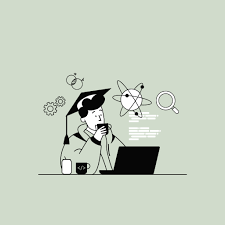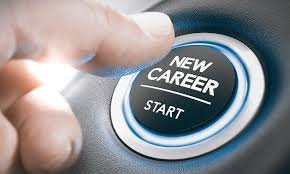
The Full Remote Work Productivity Handbook: How to Achieve Success in 2025
The Full Remote Work Productivity Handbook: How to Achieve Success in 2025
Remote work isn't just a pandemic-era trend; it's a permanent fixture of the 21st-century workforce. As we move into 2025, the novelty has worn off, and the focus has shifted from whether we can work remotely to how we can excel at it. Full remote work offers unparalleled flexibility and autonomy, but it also presents unique challenges to productivity, focus, and work-life balance.
Sustained success in a fully remote environment requires a deliberate, structured approach. It's not about replicating the office at home; it's about optimizing your personal operating system for deep work, clear communication, and consistent output. This handbook will guide you through the essential strategies to not just survive, but thrive, as a remote professional in 2025.
Chapter 1: The Optimized Workspace – Your Productivity Command Center
Your physical environment has a profound impact on your mental state and focus. Treat your workspace as a critical tool, not an afterthought.
1. Designate a Dedicated Work Zone
-
The Psychological Divide: Even if it's a small corner of a room, having a space exclusively for work creates a psychological boundary. When you "enter" this zone, your brain switches to work mode; when you "leave" it, you transition to personal time.
-
Ergonomics are Non-Negotiable: Invest in a comfortable chair, a proper desk height, and external monitors. Aches and pains are massive productivity killers and health risks.
2. Optimize for Focus and Flow
-
Minimize Visual Clutter: A tidy workspace leads to a tidy mind. Keep only work-related items on your desk during working hours.
-
Control Your Soundscape: Experiment with noise-canceling headphones, instrumental music (e.g., lofi beats, classical), or ambient noise generators (e.g., white noise, nature sounds). Find what helps you concentrate best.
Chapter 2: The Structured Day – Your Remote Routine Blueprint
The biggest myth of remote work is boundless flexibility. While true, too much unstructured flexibility leads to procrastination and burnout. A robust routine is your remote superpower.
1. Master Your Mornings (The "Prime Time" Principle)
-
Define a Start Ritual: Have a consistent routine that signals the start of your workday (e.g., coffee, a short walk, reviewing your to-do list). This replaces the commute as your transition period.
-
Tackle Your Deep Work First: Identify your most cognitively demanding tasks and schedule them for your peak productivity hours (often early morning). Protect this time fiercely from meetings and distractions.
2. Strategic Breaks (The "Recharge" Protocol)
-
Schedule Deliberate Breaks: Don't just work until you're exhausted. Implement short, regular breaks (e.g., 5-10 minutes every 60-90 minutes). Step away from your screen, stretch, or hydrate.
-
Take a Real Lunch Break: Disconnect completely. Eat away from your desk. Go for a walk. This helps prevent decision fatigue and allows your brain to reset.
3. Define Your End (The "Off-Switch" Discipline)
-
Have a Consistent Quitting Time: Overworking is a prevalent remote work trap. Establish a clear end to your workday and stick to it.
-
Implement an End Ritual: Close all work tabs, shut down your computer, or physically "leave" your designated workspace. This signals to your brain that the workday is over.
Chapter 3: Communication Mastery – Bridging the Remote Divide
Effective communication is the lifeline of remote teams. Without the informal cues of an office, clarity, intentionality, and proactive engagement are paramount.
1. Over-Communicate (The Asynchronous Advantage)
-
Document Everything: Use shared documents, project management tools (e.g., Asana, Trello, Notion), and team wikis (e.g., Confluence) to document decisions, processes, and project updates. This reduces reliance on real-time conversations.
-
Assume Nothing: If in doubt, communicate. Provide context, explain your thought process, and anticipate questions.
2. Master the Tools, Maximize Their Use
-
Synchronous (Video Calls): Use for complex discussions, brainstorming, team building, and sensitive feedback. Always have an agenda and clear action items.
-
Asynchronous (Slack, Email, Project Management Platforms): Use for updates, quick questions, sharing information, and non-urgent communication. Respect boundaries by avoiding after-hours pings.
3. Be Visible and Proactive
-
Share Your Progress: Regularly update your team on what you're working on, any roadblocks, and your achievements. This builds trust and transparency.
-
Engage Socially (Virtually): Participate in virtual coffee breaks, team social events, and non-work-related chat channels. Building rapport is just as important remotely.
Chapter 4: Self-Management & Well-being – The Sustainable Remote Professional
Remote work demands a high degree of self-discipline, but also robust self-care. Neglecting your well-being inevitably leads to burnout.
1. Prioritization & Focus (The "Eisenhower Matrix" Approach)
-
Urgent/Important Matrix: Categorize tasks based on urgency and importance. Focus on the "Important, Not Urgent" tasks (strategic work) to prevent being constantly reactive.
-
Single-Tasking: Resist the urge to multitask. Dedicate blocks of time to one task only. Close all irrelevant tabs and notifications.
2. Combat Isolation (The "Connect" Imperative)
-
Schedule Social Interactions: Deliberately schedule non-work-related calls with colleagues. Join virtual communities or professional organizations.
-
Step Outside: Get fresh air, exercise, and interact with your local community. Break the cycle of screen-to-screen isolation.
3. Protect Your Mental Health
-
Recognize Burnout Signs: Increased irritability, fatigue, cynicism, or decreased performance are red flags.
-
Build Resilience Habits: Incorporate exercise, proper nutrition, adequate sleep, and mindfulness into your routine. These are not luxuries; they are fundamental to sustained productivity.
By actively implementing these strategies, you can transform the challenges of full remote work into a powerful advantage. In 2025, the most successful remote professionals aren't just working from home; they're mastering a new paradigm of productivity and well-being.
FAQs on Remote Work Productivity in 2025
1. How do I avoid distractions like family members or household chores while working from home?
The key is clear boundaries and communication. If you live with family, establish a "do not disturb" signal (e.g., a closed door, a specific headset). Communicate your work schedule to them. For chores, treat them like personal appointments: schedule specific times outside of work hours. If you find yourself frequently distracted, consider using website blockers during work time.
2. What are the best tools for remote team collaboration and productivity?
Essential tools typically include:
-
Communication: Slack, Microsoft Teams, Google Chat (for instant messaging and quick discussions).
-
Video Conferencing: Zoom, Google Meet, Microsoft Teams (for synchronous meetings).
-
Project Management: Asana, Trello, Jira, Monday.com, ClickUp (for task tracking and project visibility).
-
Document Collaboration: Google Workspace (Docs, Sheets, Slides) or Microsoft 365 (Word, Excel, PowerPoint) (for real-time co-editing).
-
Knowledge Base: Notion, Confluence, Google Sites (for documenting processes and information).
3. How can I prevent overworking and burnout when there's no clear separation between home and office?
This is one of the biggest challenges. Implement the "Off-Switch" discipline (Chapter 2, point 3) rigorously. Use a clear end-of-day ritual. If possible, turn off work notifications on your personal devices. Schedule non-work activities (exercise, hobbies, social plans) into your calendar as firmly as work meetings. Remember that sustained productivity comes from rest and recovery, not continuous work.



